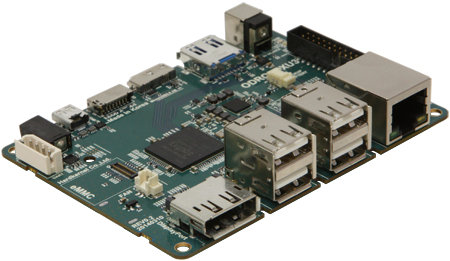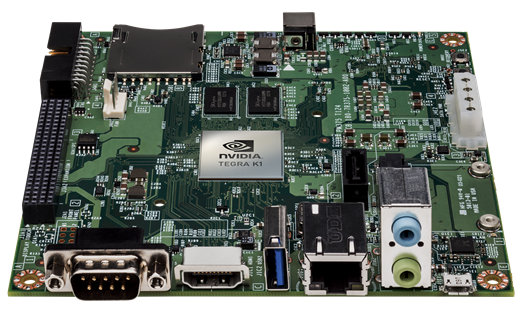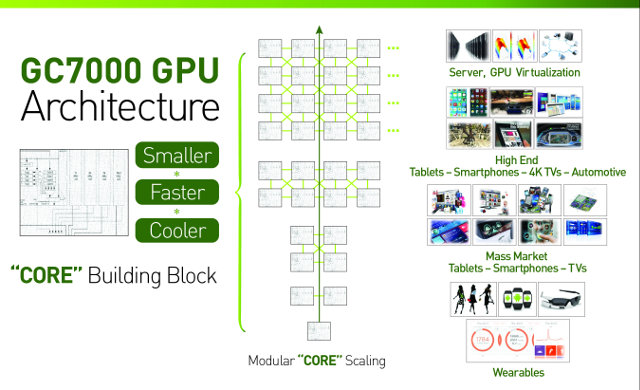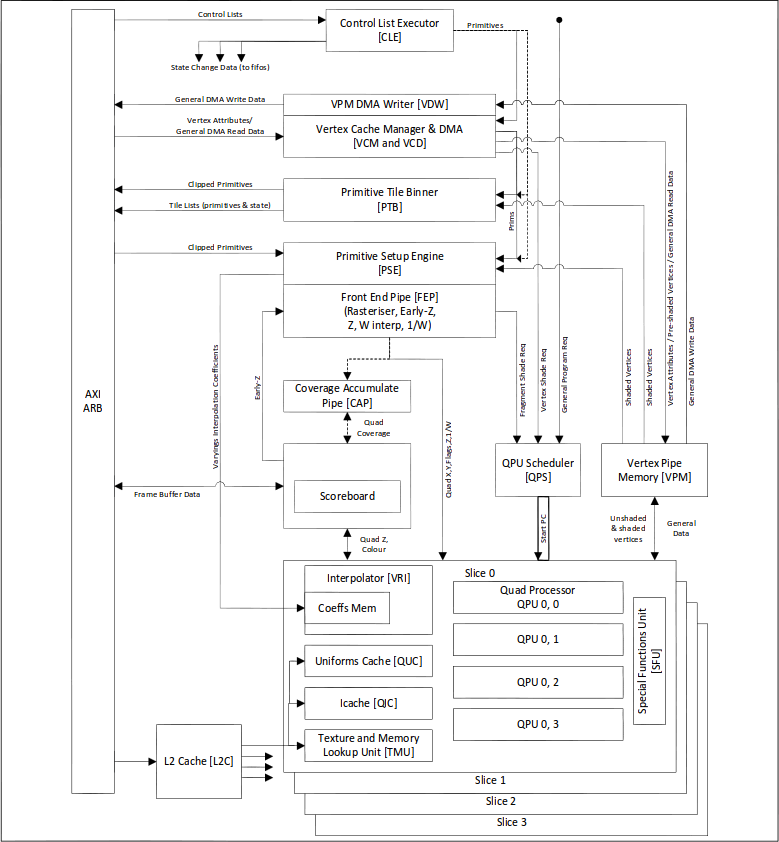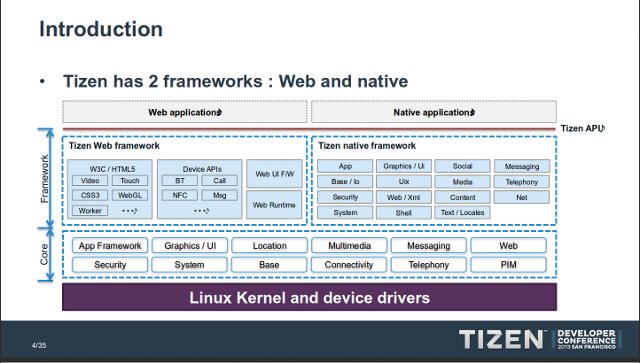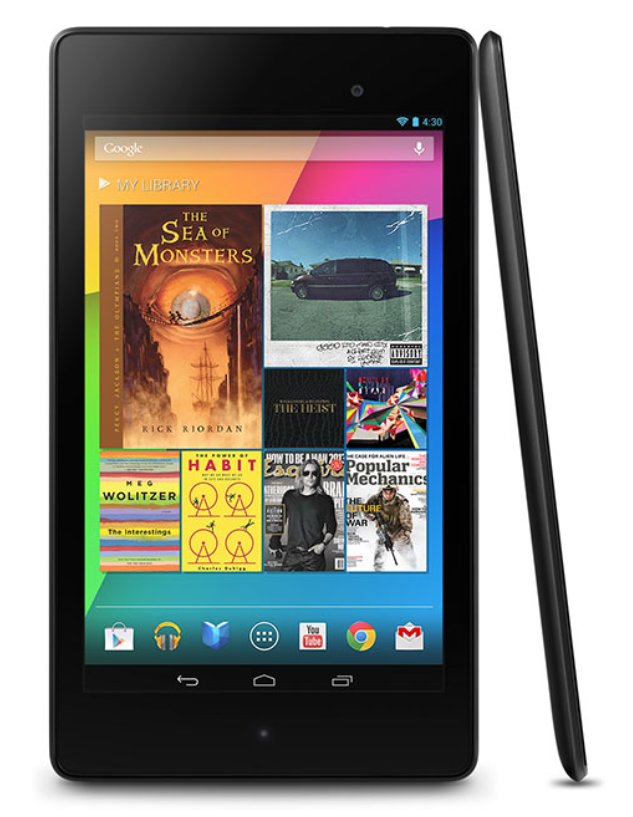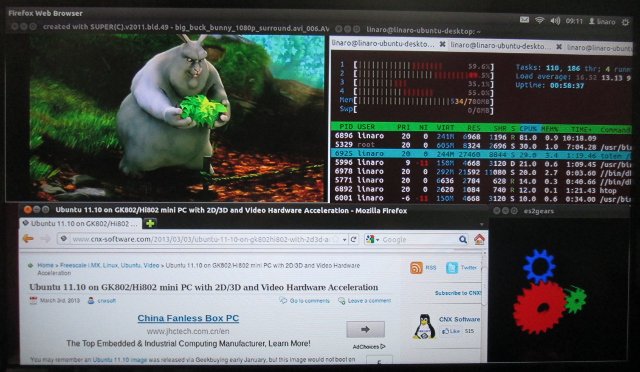Remember ODROID-XU2 development board based on Exynos 5420? The bad news is that it apparently got scrapped, but the good news is that it gave birth to ODROID-XU3 development board powered by the latest Samsung Exynos 5422 octa core big.LITTLE SoC with support for Ubuntu 14.04 and Android 4.4, including GPU 3D acceleration with the company promising a full desktop experience in Ubuntu. ODROID-XU3 specifications: SoC – Samsung Exynos 5422 quad core ARM Cortex-A15 @ 2.0GHz+ quad core ARM Cortex-A7 @ 1.4GHz with Mali-T628 MP6 GPU supporting OpenGL ES 3.0 / 2.0 / 1.1 and OpenCL 1.1 Full profile System Memory – 2GB LPDDR3 RAM PoP (933Mhz, 14.9GB/s memory bandwidth, 2x32bit bus) Storage – Micro SD slot (up to 64GB) + eMMC 5.0 module socket (16, 32, or 64GB module available) Video Output – micro HDMI (Up to 1080p) and DisplayPort (up to 2160p) Audio Output – micro HDMI and […]
Nvidia to Give Away 50 Jetson TK1 Development Boards
Nvidia Jetson TK1 is a development board powered by Tegra K1 quad core Cortex A15 SoC including a 192-core Kepler GPU. This is one the the best, if not the best, ARM platform when it comes to GPU performance, GPGPU capabilities, and the only one I know of that supports OpenGL 4.4 “Desktop”, as well as Nvidia’s CUDA 6.0. You can buy the board for $192, but if you are a developer and have a project that could leverage and showcase Tegra K1 capabilities for computer vision solutions for robotics, medical devices, military, and automotive applications, you may well get one board for free via Nvidia’s Tegra K1 CUDA Vision Challenge. To apply, you need to submit your proposal via Nvidia’s TK1 vision challenge page by April 30, 2014. Please note, the contest is only open to US residents. The company will then consider the various proposals based on innovativeness, […]
Vivante Unveils Details About GC7000 Series GPU IP Family
Earlier this month, Vivante Corporation has announced several silicon partner integrations (but no names given) of its GC7000 Series GPU IP into SoCs targeting wearables, mobile, automotive, and 4K TV products, and provided some more details about its GC7000 family which supports features such as OpenGL ES 3.1 API, and hardware TS/GS/CS (tessellation / geometry / compute shader) extensions for Android. According to the company, they key benefits of their GC7000 GPU IP can be summarized as follows: True GPU Scalability – GC7000 Series products support limited silicon area to match form factor and market requirements. Products can snap to grid starting at 3.0 mm2 (28 nm) for the smallest single GPU GC7000 instance and grow in simple modular fashion for high end implementations to achieve what the company’s claims to be the the industry’s best PPA (power/performance/area). Smallest Licensable OpenGL ES 3.1 Cores with Geometry, Tessellation, and Compute Shaders […]
Raspberry Pi Gets Open Source 3D Graphics Drivers and Documentation
The Raspberry Pi was launched 2 years ago, and for its birthday, Broadcom decided to release documentation and open source OpenGL ES 1.1 and 2.0 driver for the Videocore IV GPU. You may remember the Raspberry Pi Foundation already release an open source GPU driver in 2012, but this was only for the part running on the ARM11 core for Broadcom BCM2835 SoC, which is just a few hundred lines of code long, and communicates with a binary blob which does all the work in the GPU itself. This new release however goes much further with a 111 page document entitled “VideoCore IV 3D Architecture Reference Guide“, and open source driver for the 3D System of the GPU. Strangely the release is however not for BCM2835, but instead BCM21553. Broadcom clearly has the source for BCM2835 too, so this must have been made for legal reasons. VideoCoreIV packs a lot […]
Tizen Developer Conference 2013 Presentation Slides, Audio Recording and Videos Are Now Available
The Tizen Developer Conference took place in San Fransisco, on May 22-24, 2013. We’e already seen a few Tizen demos from the conference, but slides and media files (mostly audio, but also some videos) are now available for keynotes and technical presentations. As this was just the second Tizen conference, there were still many sessions dealing with overall structure of the operating system, and explaining how to get started either with native or web development, such as: An Overview of the Tizen Native Application Framework Introduction of Tizen SDK minimal web development tools Tizen Design Guidelines and User Experience Tizen Overview and Architecture Tizen.org Web Infrastructure Tizen enters a mobile world dominated by Android and iOS, so several sessions targeted app developers used to work with either operating systems in order to show them how to port their existing apps to Tizen: Bringing Android Apps to Tizen From iOS to […]
Google Releases Android 4.3 Jelly Bean, Unveils New Nexus 7 Tablet
Yesterday was a big day for Google with several important announcements, including the Chromecast HDMI TV dongle, an updated version of Nexus 7 tablet, and the release of Android 4.3, still codenamed Jelly Bean. In this post, I’ll start with the hardware, and move to explain what’s new with Android 4.3, and where you can download source and images for your device. New Nexus 7 The new Nexus 7 tablet will run Android 4.3 on the following hardware: SoC – Qualcomm Snapdragon S4 quad-core processor @ 1.5GHz with Adreno 320 GPU @ 400MHz System Memory – 2GB RAM Storage – 16GB to 32GB of storage Display – 7″ IPS display (1920 x 1200) Connectivity – Dual band 802.11a/b/g/n WiFi (2.4G/5G), Bluetooth 4.0, and NFC Camera – 5MP rear camera and 1.2MP front camera Video Output – HDMI output (via SlimPort) Audio – Stereo speakers, 3.5mm headphone jack, microphone USB – […]
Preliminary Ubuntu 12.04 RootFS for GK802/HI802 mini PC
After releasing a pretty good Ubuntu 11.10 image with both VPU and GPU acceleration for Freescale i.MX6 based HDMI dongles last month, Jasbir (aka jas-hacks) has released an Ubuntu 12.04 image with GPU support thanks to the help of Octavio (Yocto Project contributor), and Wi-Fi support. It’s possible to select Unity 2D or Xubuntu desktop, and Chromium and Neverball, a 3D ball game, are part of the image. There’s still more work however, as VPU (Video Processing Unit) support is work in progress, Bluetooth does not work yet, and OpenGL ES test programs such as glmark2-es2 or es2gears do not work properly with Xubuntu, even though they do work fine with Unity 2D. Jasbir uploaded a video showing Neverball 3D game in GK802, and it works pretty good, although the framerate does not seem optimal for now. If you want to give this image a try, install GK802 Ubuntu 11.10 […]
Ubuntu 11.10 Image for Hi802 / GK802 is Now Available for Download
About 2 weeks ago, Jasbir released an Ubuntu 11.10 image and installation instructions for GK802 and Hi802 mini PCs based on Freescale i.MX6. I could only find time to give it try yesterday and today. I’ll provide the steps I followed to install the image, and my quick first impressions of the stability and performance of this image. Installation Instructions I mainly followed the instructions provided by Jasbir, and run GParted to increased the partition size on my micro SD card. The image is for a 8 GB micro SD, but those instructions should work on 4GB SD card and greater, as the rootfs partition is only 3GB large. Download the Ubuntu 11.10 image, uboot, as well as the kernel image and modules in a Linux PC:
|
1 2 3 4 |
wget http://dl.miniand.com/jas-hacks/gk802/ubuntu_gk802.img.gz wget http://dl.miniand.com/jas-hacks/gk802/u-boot.imx wget http://dl.miniand.com/jas-hacks/gk802/uImage_3.0.35-0269_cpu_freq wget http://dl.miniand.com/jas-hacks/gk802/modules_3.0.35-02695.tar |
Copy the image, uboot and the kernel to the micro SD card by typing the commands below:
|
1 2 3 4 |
gzip -d ubuntu_gk802.img.gz sudo dd if=ubuntu_gk802.img of=/dev/<sd_device> sudo dd if=u-boot.imx bs=1k seek=1 of=/dev/<sd_device> && sync sudo dd if=uImage_3.0.35-0269_cpu_freq of=/dev/<sd_drive> bs=1048576 seek=1 && sudo sync |
Replace /dev/<sd_device> by your […]


